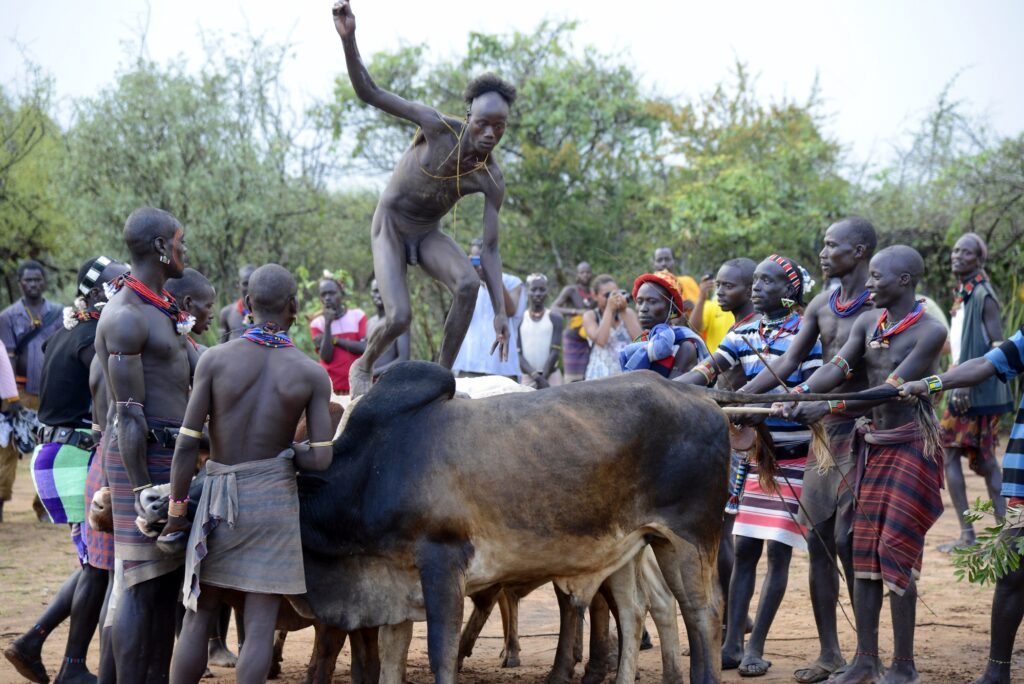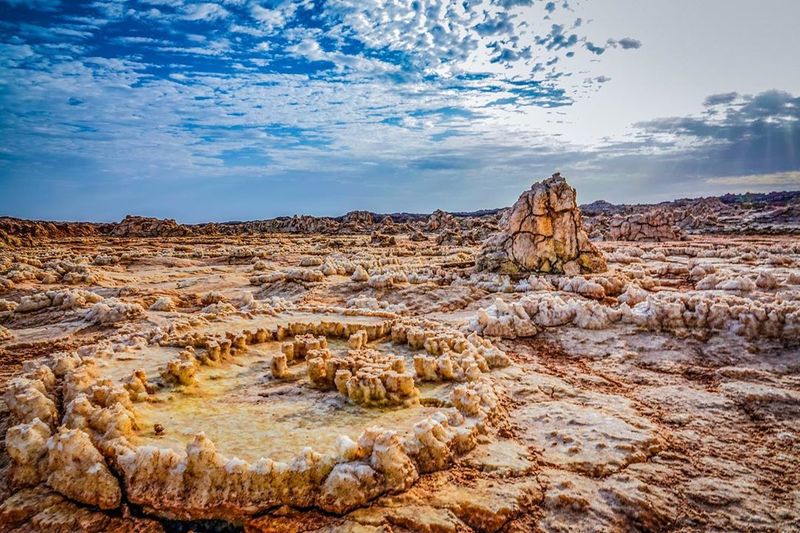The best time to visit Ethiopia is September to April, but particularly at either end of the rainy season. Travel in April, when the land is dry and barren, or as it flourishes again in September-October. This green season is also best for highland wildlife. Heavy rain soaks the Omo Valley from the end of March to June, so travel here November-March or June-September. Generally, though, the rains cause little disruption; you’ll just find lusher landscapes and fewer tourists. Much of Ethiopia sits over 1,500m high, so days can be mild and nights cold – especially in the fog-shrouded highlands, which soar well over 3,000m.
Ethiopia has a mild climate compared to many East African countries, and this can come as a surprise to many. Despite its equatorial position, Ethiopia is a high altitude region, with much of the country above 2,000 metres. This means temperatures are milder throughout the year, with average day time temperatures of 20°C-25°C throughout the year.
Unlike many of its East Africa neighbours that experience tropical climates, with multiple rainy seasons throughout the year, Ethiopia experiences just one long rainy season from June to early September. During these months, trekking in the highland regions becomes more difficult as some access roads and hiking trails become impassable. However, there is plenty to see and do outside the mountains, and although hiking can be more challenging, it is still perfectly possible to visit the highlands.
The rains actually come a little earlier in the Omo Valley, running from April to May. This means that a trip south can be a great option from June to September while the north experiences the rains.
When to visit Ethiopia,Month By Month
Ethiopia’s annual Christian celebration, Timkat, takes place around the middle of January and, although crowded with tourists and known for large gatherings, this is an amazing event to witness firsthand especially with the relatively mild temperatures.
If you’re planning on visiting Ethiopia any time over their winter period, which runs until February, you need to be aware that it can get cold in the highlands, especially at night.
The Simien Mountains and northern areas, around towns like Lalibela, start to get a little warmer from March and trekkers will find ideal conditions with the occasional shower never too problematic.
Regions around the Omo Valley in the southwest of Ethiopia are the first to experience the shorter belg rains in April with the wetter weather moving eastwards into Bale Mountains National Park and the Rift Valley Lakes during May and June.
As the heavier and more permanent rains of the kiremt season really start to kick in around Simiens and Bale in July and August it’s probably advisable to give them a miss around this time of year and opt for Omo and Mago National Parks instead.
Ethiopia’s rainy season can stretch into September although around October you’ll find the best time of year to visit the central highlands and northern circuit with lush green landscapes featuring carpets of yellow meskel flowers as well as easier travelling conditions.
One of the best times to visit the South Omo Valley and the Danakil Depression on the Eritrean border are the months of November and December as temperatures are lower with little or no rainfall.
In general, avoid the rainy season from June to August and bear in mind lower temperatures the higher the altitude and hotter conditions the lower you go and the further east you travel.











